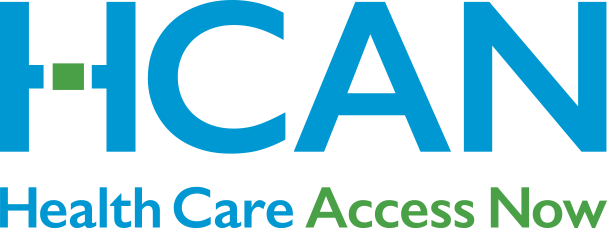PRESS RELEASE: HCAN Annual Report shares important data for 2019 and 2020
FOR IMMEDIATE RELEASE
Health Care Access Now (HCAN) has released its Annual Report, which includes data about how its model and Community Health Workers (CHWs) have improved health outcomes for clients in Hamilton County in both 2019 and 2020.
- Despite pandemic limitations, support for clients increased between 2019 and 2020, with a 20% uptick in clients served and a 31% surge in client visits. Postpartum visits also increased in 2020 by 21%.
- Barriers to good health outcomes had a common thread in both 2019 and 2020: food insecurity. In both programs (Adult and Maternal & Child), CHWs regularly provided clients with resources for food assistance.
- In both 2019 and 2020, CHWs focused on providing Safe Sleep Educations to clients in the Maternal & Child program, with a combined 518 Safe Sleep Educations delivered in 2019 and 654 in 2020.
HCAN trains and coordinates CHWs, as well as serving as regional director of the Pathways Community HUB model (Hub), an evidence-based system that breaks down typical barriers to good health outcomes. The 2019-2020 Annual Report shares data on CHWs and their successes, common client barriers, birth outcomes, and other important information.
Health Care Access Now (HCAN) is pleased to share data from the years 2019 and 2020 in its Annual Report, which demonstrates successes by Community Health Workers (CHWs) in improving health outcomes for under-resourced clients. HCAN certifies and coordinates CHWs in communities throughout the Hamilton County area, servicing neighborhoods such as Millvale, Mt. Healthy, and Middletown. It also acts as the Pathways Community HUB (Hub) director for the region, partnering with agencies to dispatch their own trained CHWs using the Hub framework.
Though the pandemic brought its own set of challenges, CHWs were able to increase client support this year, with 20% more clients served and 31% more client visits than the previous year. Postpartum visits, critical for safeguarding maternal health, also increased in 2020 by 21%.
“The epidemic’s rapidity of onset and its disproportionately targeted devastation on impoverished, under-resourced communities like the ones we serve has made the progress of our organization over the last year all that more remarkable,” says Dr. Robert Collins, Board Chair for HCAN.
The Hub model provides a method for CHWs to identify common client barriers so they can recommend resources that will improve health outcomes. Those barriers had a common thread in both 2019 and 2020: food insecurity. In all their programs (Adult and Maternal & Child), CHWs regularly provided resources for food assistance for clients. Other obstacles addressed included transportation assistance, help with clothing and baby items, and housing assistance.
CHWs provide “Educations” to clients using the Hub framework. Safe Sleep Educations (including the ABCs of safe sleep: alone, back, crib) were most frequently provided in the Maternal & Child program, with a combined 518 Safe Sleep Educations imparted in 2019 and 654 in 2020. These Educations are crucial: According to Cradle Cincinnati’s data from 2019, Hamilton County’s infant mortality rate was “9.1 deaths per 1,000 live births,” as compared to 7.1 for Ohio and 5.8 for the nation.
“I am filled with hope and determination working alongside the talented team at HCAN to improve the health of our community one person at a time,” says Sarah Mills, CEO of HCAN.
The data from the past two years emphasizes the importance of the work that HCAN and its CHWs do for the community. Read the whole report here.


